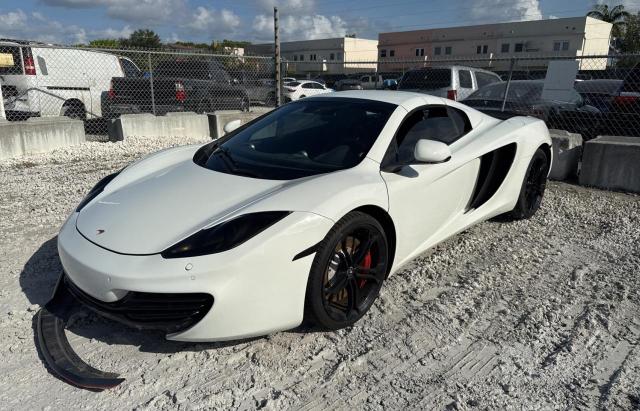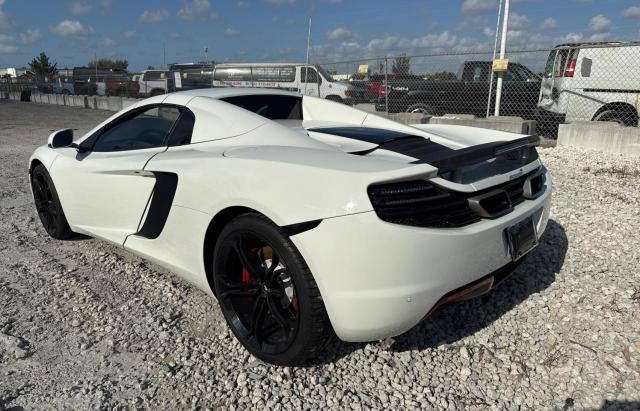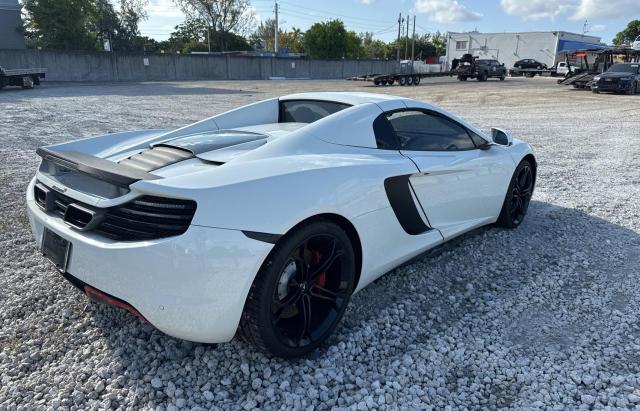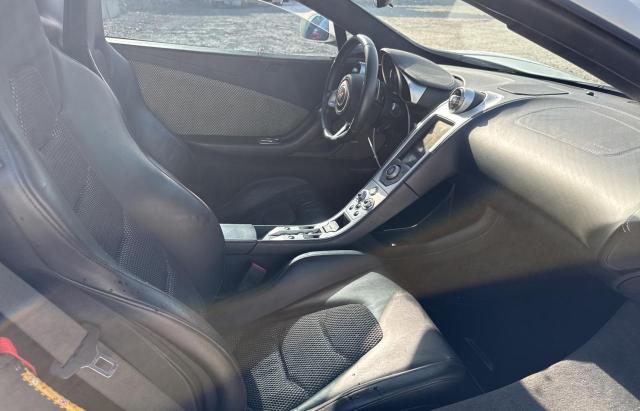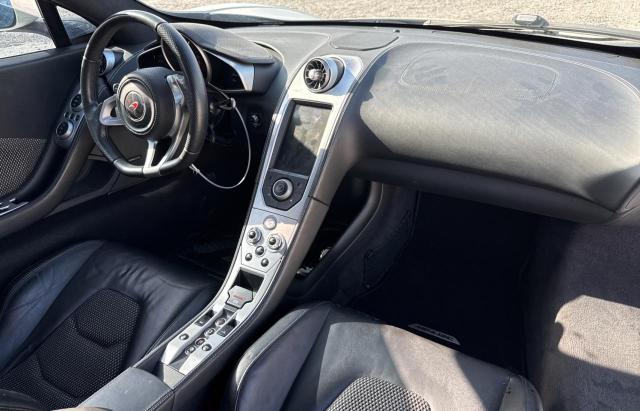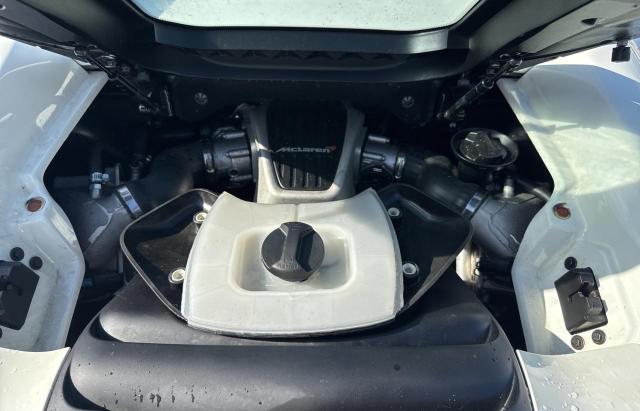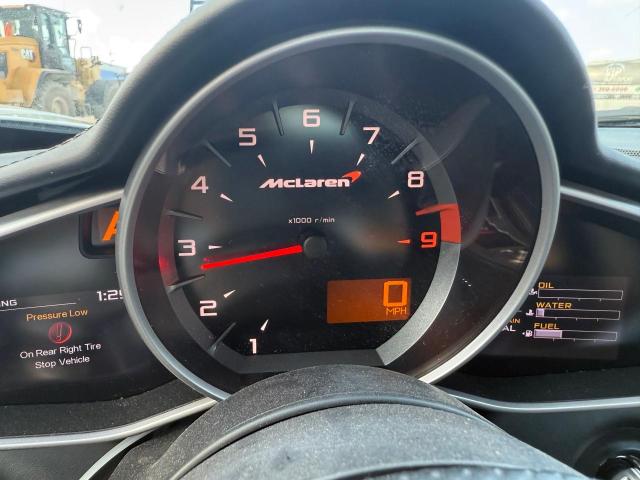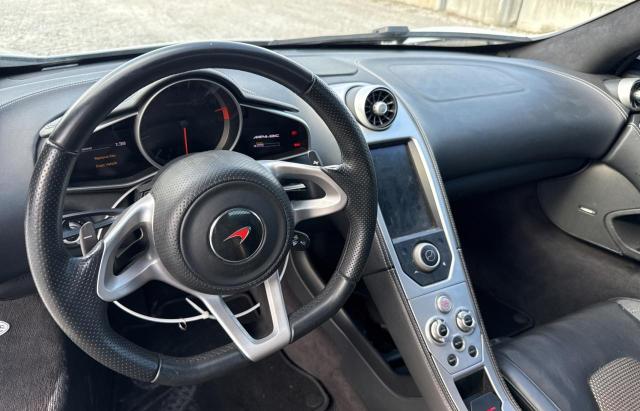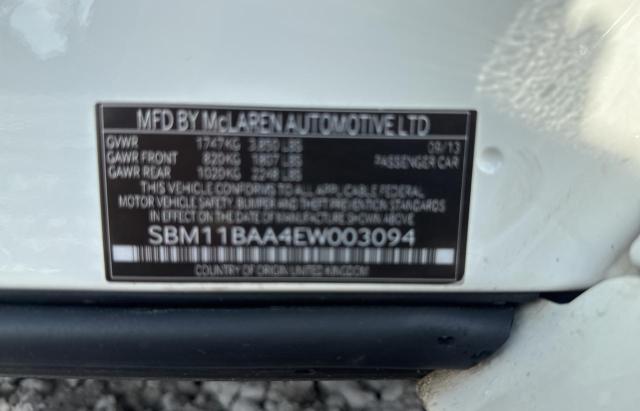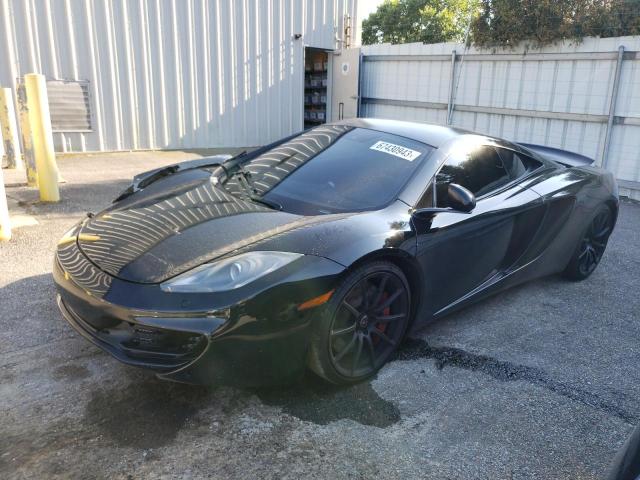2014 MCLAREN MP4-12C | SBM11BAA4EW003094
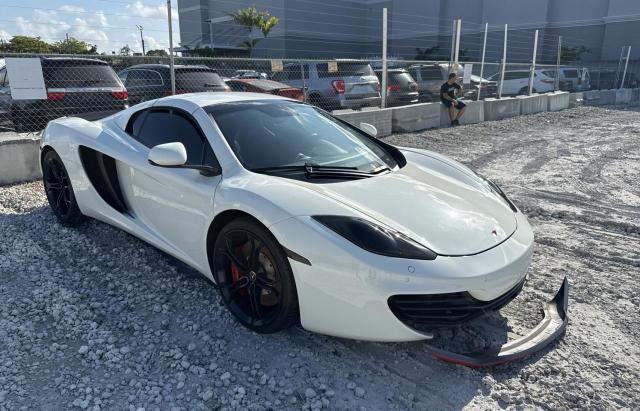 ❯
❯2014 MCLAREN MP4-12C | SBM11BAA4EW003094
 United States
United StatesLot details
- Sale Date2025-06-12
- Lot Number60408625
- ACV189000 $
- Sale documentFL - CERT OF TITLE SLVG REBUILDABLE (P)
- LocationFL - WEST PALM BEACH
- Odometer23,451 miles (37,741 km)
- Primary DamageNORMAL WEAR
- Secondary DamageFRONT END
Vehicle specifications
1
~$240,000
Engine: 3.8L twin-turbocharged V8
Torque: 600 Nm
0–100 km/h: ~3.1 s
The McLaren MP4-12C was the brand’s first all-new road car since the F1, and its debut model in the modern supercar era. It was engineered with obsessive attention to weight, balance, and aerodynamic efficiency. Powered by a 3.8-liter twin-turbocharged V8 (M838T) co-developed with Ricardo, it delivered 600 hp and 600 Nm in early models (625 hp from 2013 onward). With a dry weight under 1,400 kg, it achieved 0–100 km/h in just 3.1 seconds and a top speed of 333 km/h.
Unlike many supercars of its time, the 12C prioritized usable performance through active damping, ProActive Chassis Control, and brake steer technology (borrowed from McLaren's F1 cars). These innovations allowed for sublime grip, sharp cornering, and surprising ride comfort. The 7-speed Seamless Shift Gearbox (SSG) provided lightning-fast dual-clutch shifts, with adaptive settings for road or track use.
With a carbon fiber Monocell chassis tub, advanced cooling, and active aero, the MP4-12C was designed more like a race car than a traditional exotic. It marked the beginning of McLaren’s dominance in the lightweight, high-tech performance sector.
Final Bid McLaren MP4-12C (2014)
$51,000
$51,000
$51,000
Body Styles
The MP4-12C was initially launched as a two-door coupé with a compact, mid-engine layout and signature dihedral (butterfly) doors. In 2012, McLaren introduced the 12C Spider, which featured a folding hardtop roof that stowed behind the cabin without compromising structural rigidity — thanks to the carbon tub requiring no additional bracing.
The coupé’s body was sculpted for aerodynamic efficiency, with integrated active rear airbrake, large side air intakes, and a clamshell rear deck housing the engine and twin exhausts. The roofline flowed seamlessly into the fenders, emphasizing McLaren’s “shrink-wrapped” design philosophy — compact, low, and tightly composed.
The 12C measured approximately 4.5 meters in length, with wide haunches and minimal overhangs. Its clean, technical aesthetic contrasted with the theatrical curves of its Italian rivals, projecting a high-tech, understated personality.
Model Name Meaning (Manufacturer)
“MP4” refers to McLaren Project 4, the chassis naming system initiated by team boss Ron Dennis in the early 1980s for Formula 1 cars. “12” represented an internal performance index used to benchmark key performance and efficiency metrics. “C” stood for Carbon, referencing the Monocell carbon-fiber tub, a core innovation of the car.
Body & Interior Colors and Rims
The McLaren MP4-12C (2011–2014) was available in a sleek, aerodynamic silhouette, accentuated by a well-curated selection of performance-inspired paint finishes. Standard colors included McLaren Orange — a tribute to the brand’s racing legacy — along with Silver, Volcano Red, Sapphire Black, Ice Silver, Supernova Silver, and Carbon Black. McLaren’s bespoke division, MSO (McLaren Special Operations), offered additional finishes such as Volcano Yellow, Pearl White, Aurora Blue, and Graphite Grey, in both gloss and satin matte variants. Some early examples even featured ultra-rare paint-to-sample color schemes, further emphasizing individuality in the boutique supercar market.
The MP4-12C’s fluid bodywork, with its signature dihedral doors, minimal overhangs, and functional aero surfaces, served as the perfect canvas for these finishes. The carbon fiber MonoCell chassis tub was visible in some trim combinations and complemented by carbon fiber accessories, such as front splitters, rear diffusers, and mirror caps, especially in higher trims or MSO-enhanced builds.
Inside, the cabin struck a balance between motorsport function and minimalist luxury. Upholstery was offered in semi-aniline leather, Alcantara, or a combination of both, with colors like Carbon Black, Harissa Red, Stone Grey, Tan, and Orange. Contrasting stitching in McLaren Orange, Yellow, or Silver added subtle visual detail, while the seats ranged from lightweight racing buckets to fully adjustable electric leather seats with heating and memory.
Trim surfaces included satin carbon fiber, machined aluminum, or piano black gloss, with MSO options enabling bespoke steering wheels, extended leather dashboards, and custom embroidery. The cabin layout was focused around a floating center stack, housing the IRIS infotainment system with vertical screen orientation and tactile rotary switches. The interior reflected McLaren’s design philosophy: focused, functional, and light — devoid of unnecessary bulk or ornamentation.
Wheels were a key element in defining the MP4-12C’s visual identity. Standard configurations included 10-spoke “Lightweight” forged alloy wheels, typically in 19 inches at the front and 20 inches at the rear. Available finishes included Silver, Stealth (dark grey), Gloss Black, and Diamond Cut, depending on the exterior color and trim level. Optional super-lightweight forged wheels shaved unsprung weight while maintaining durability, and MSO provided custom finishes to match or contrast body colors.
Wrapped in Pirelli P Zero Corsa tires, these wheels were engineered for high-speed stability, with tire pressure monitoring and track-derived compound options. Behind the wheels sat carbon-ceramic disc brakes, with 6-piston front and 4-piston rear calipers, available in finishes such as McLaren Orange, Red, Silver, Yellow, and Gloss Black, typically adorned with McLaren script or logo. The brake system’s visual presence was as dramatic as its fade-free stopping power.
The overall stance of the MP4-12C was defined by tight wheel arches, a low-slung profile, and its wide track, giving the car a planted, agile posture — made all the more striking by its finely finished wheels and paintwork reflecting the brand’s relentless pursuit of performance through lightweight precision.
Top Expensive Options
- Carbon Ceramic Brake System with Colored Calipers: $10,500
- Lightweight Forged Wheels (Diamond Cut or Stealth Finish): $5,800
- MSO Paint to Sample: $8,000–$12,000
- Carbon Fiber Interior Upgrade Pack: $6,400
- Electric & Heated Memory Sport Seats: $3,200
- Meridian 7-Speaker Audio System Upgrade: $2,700
- Vehicle Lift System (Front Axle): $2,200
- IRIS Navigation & Infotainment Touchscreen System: $3,000
- MSO Carbon Fiber Engine Bay Panels: $4,000
- McLaren Branded Luggage Set & Carbon Sill Plaques: $1,500
vs Competitors
The MP4-12C was benchmarked against the Ferrari 458 Italia, Lamborghini Gallardo LP560-4, and Audi R8 V10. While Ferrari delivered more emotional engagement and the Gallardo more drama, the McLaren stood out for superior chassis composure, faster acceleration, and race-derived technology. It was less showy but more surgical, appealing to drivers who valued precision and innovation over heritage theatrics.
Its ride comfort, even in Sport mode, was unmatched by any rival. The 12C could lap circuits with the best of them — then drive home in comfort, with active suspension soaking up bumps like a luxury sedan.
Fun Fact
The MP4-12C was the first production road car to feature a full carbon fiber monocoque tub under $300,000, a structural innovation previously reserved for seven-figure hypercars. It also introduced “Brake Steer” to road cars — a system originally banned in Formula 1 — which helped reduce understeer by subtly braking the inside rear wheel in corners. This made the 12C feel far more agile and neutral than any of its peers, especially in fast, sweeping bends.


